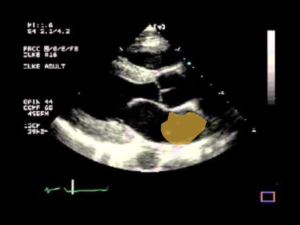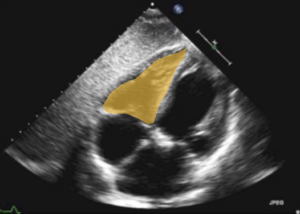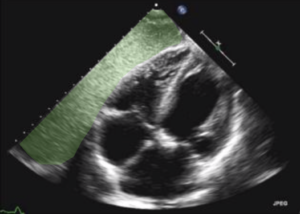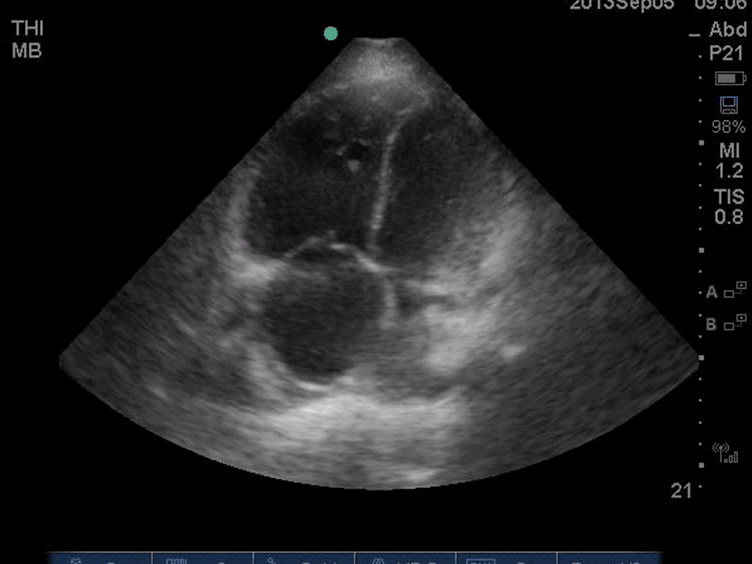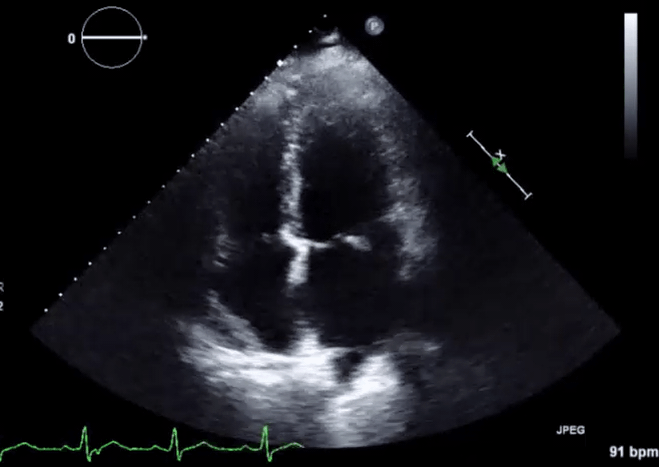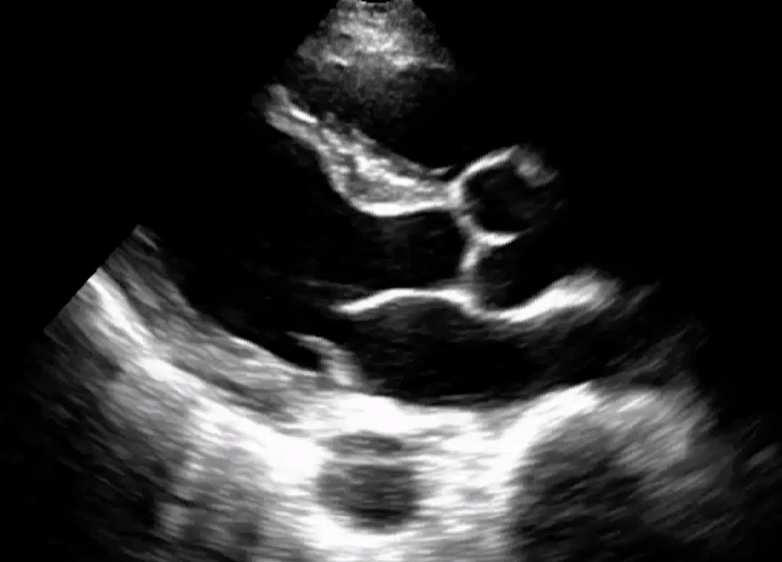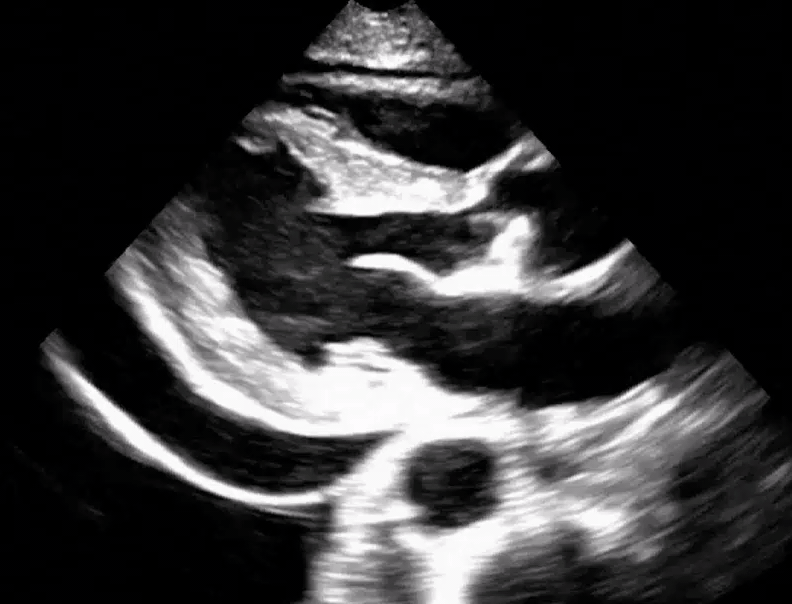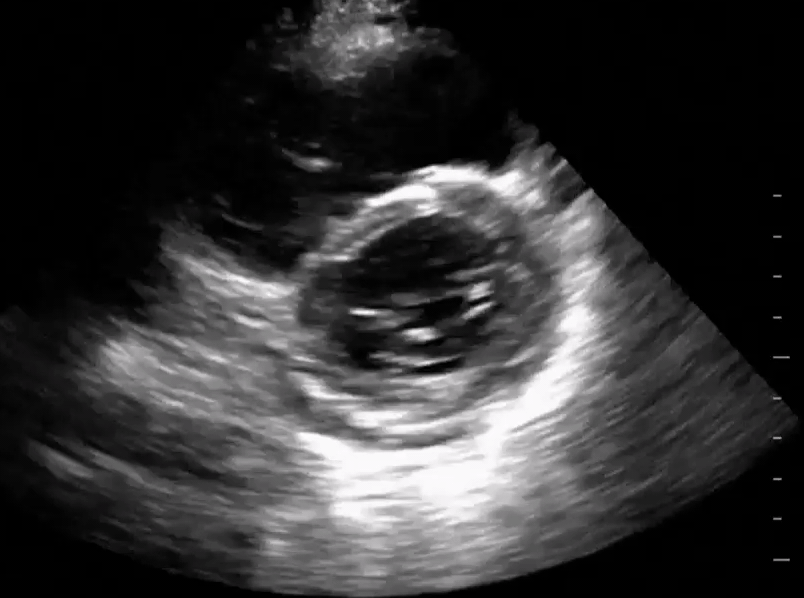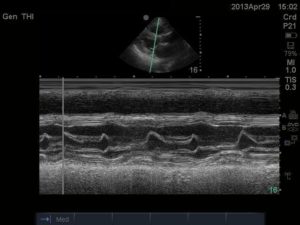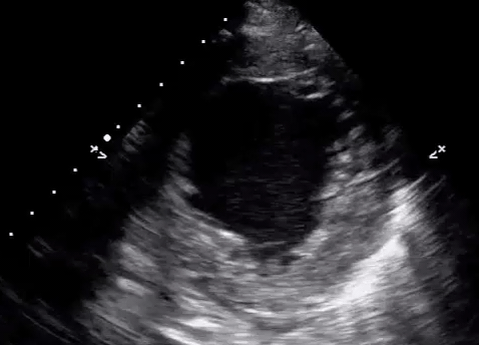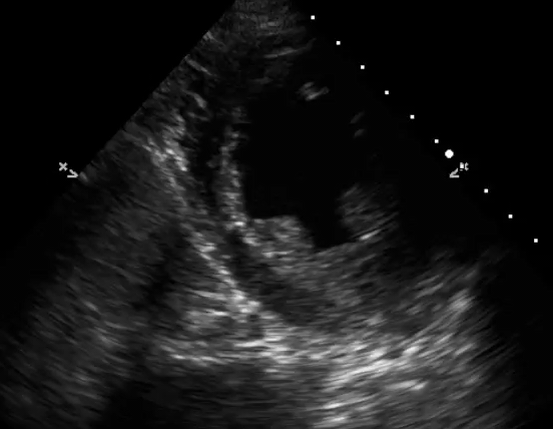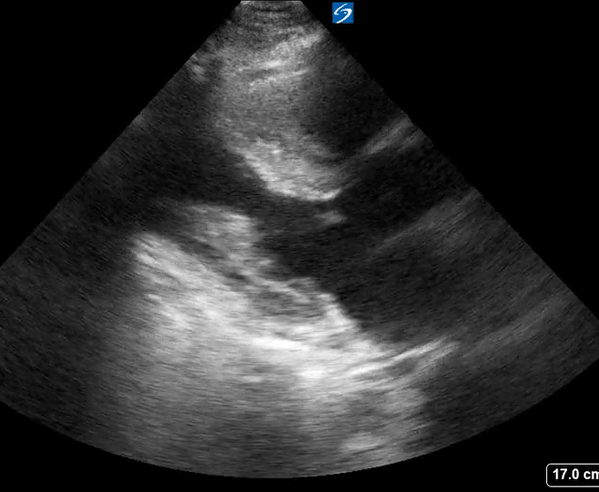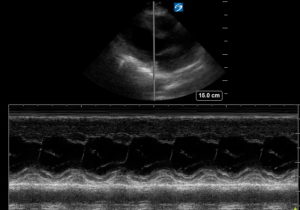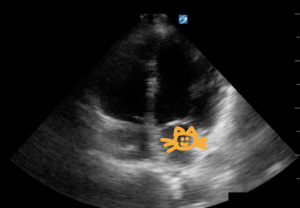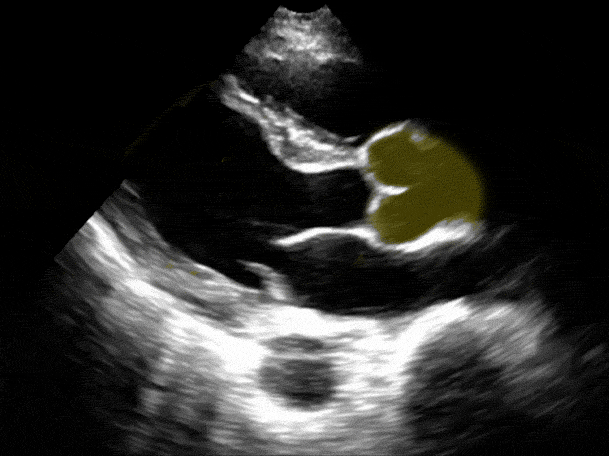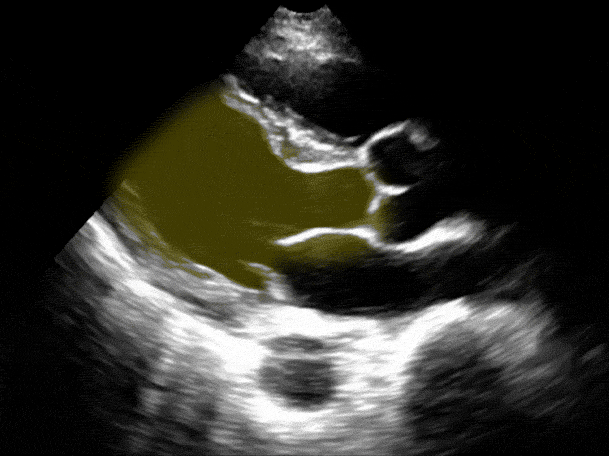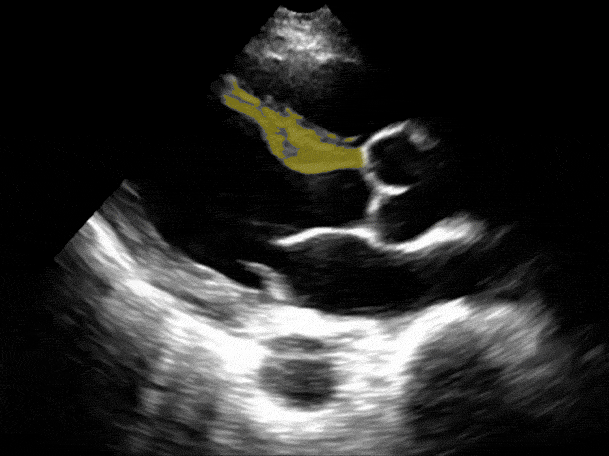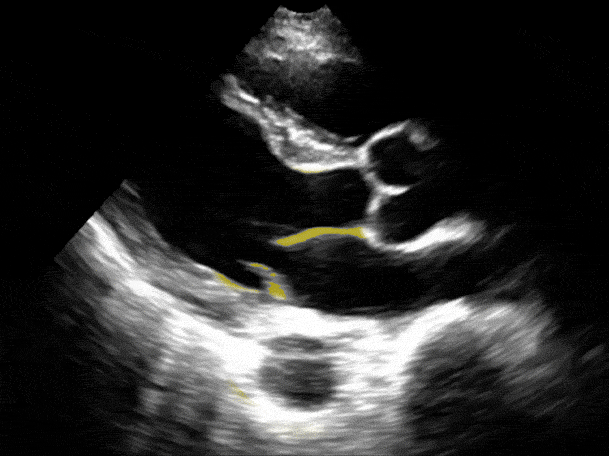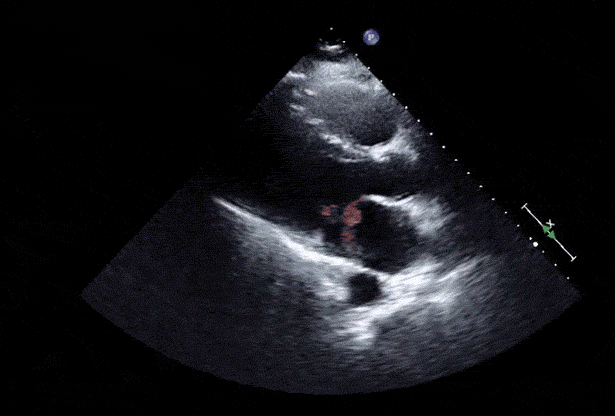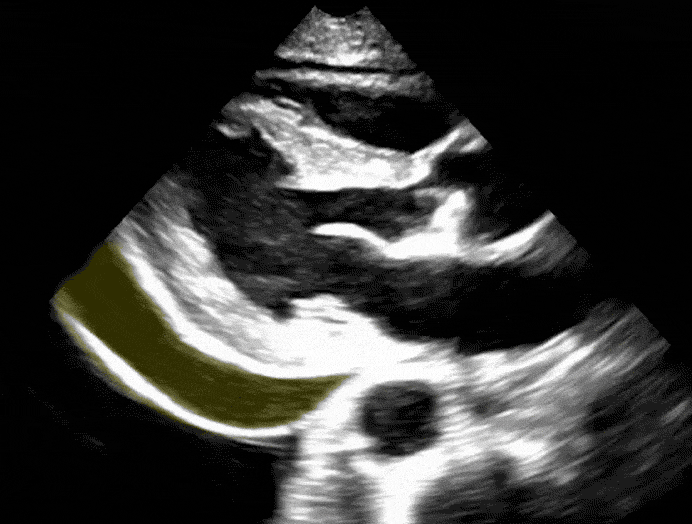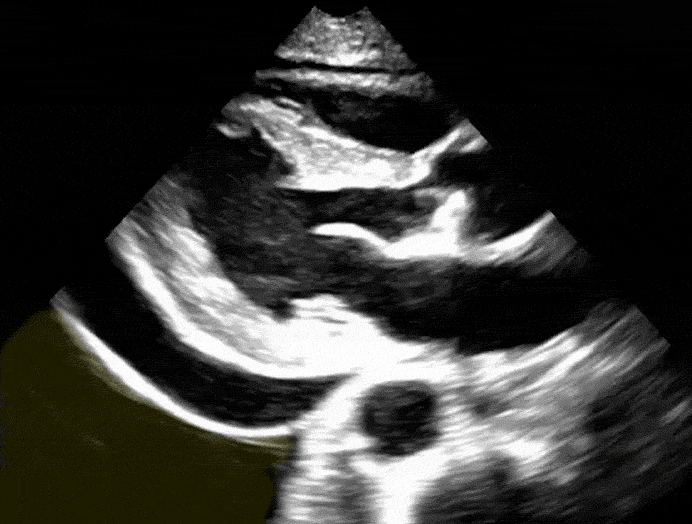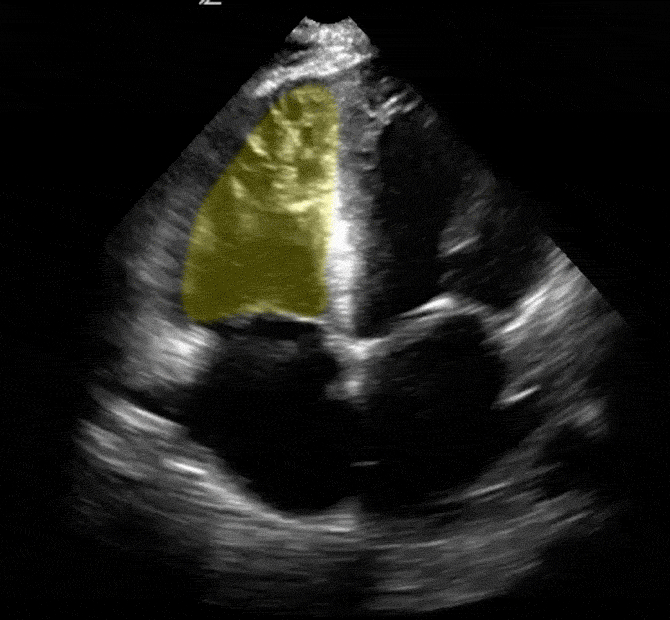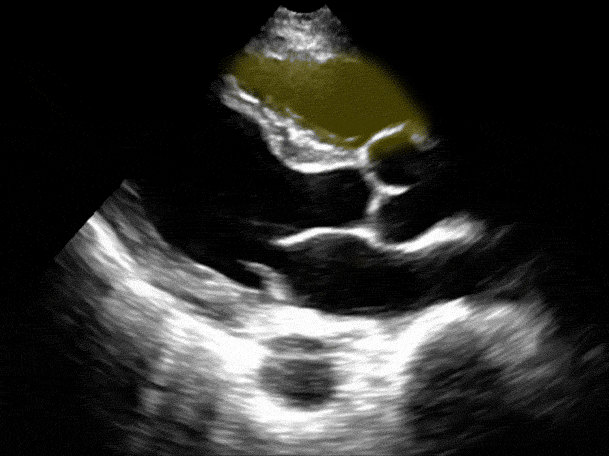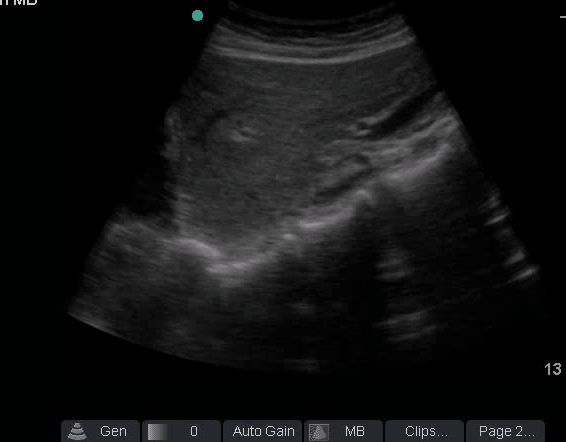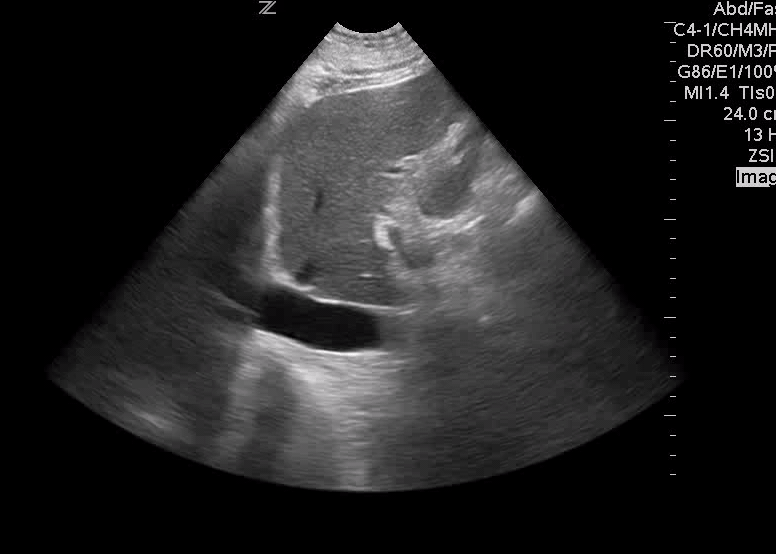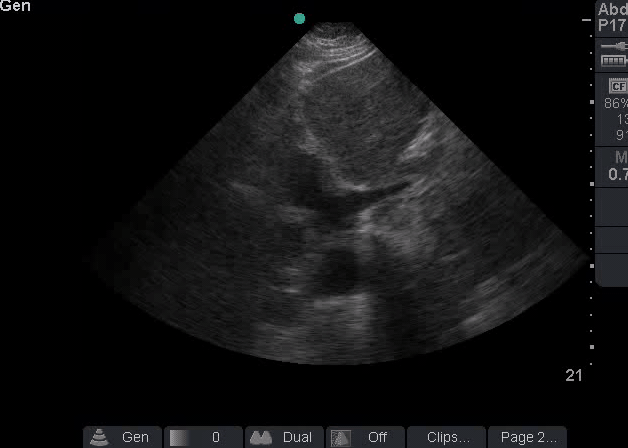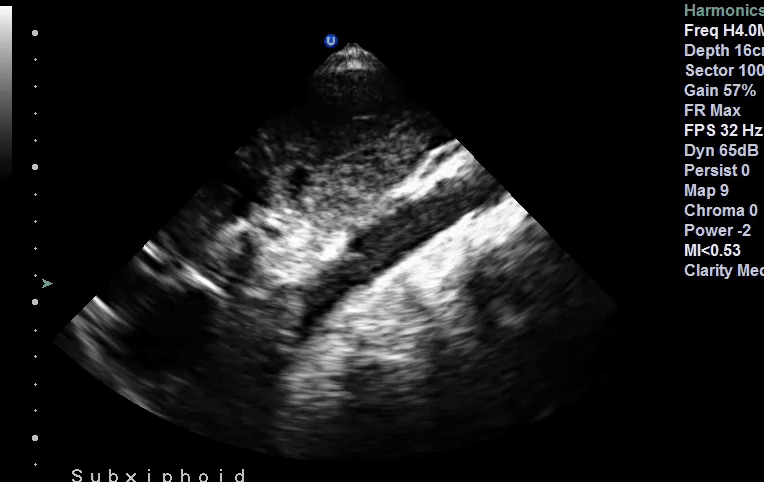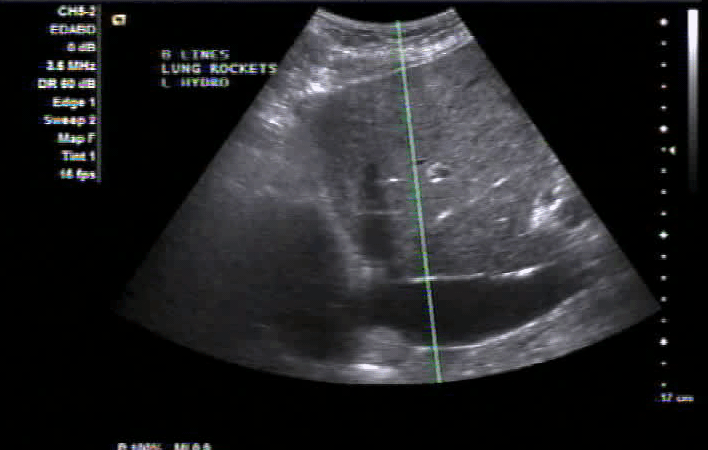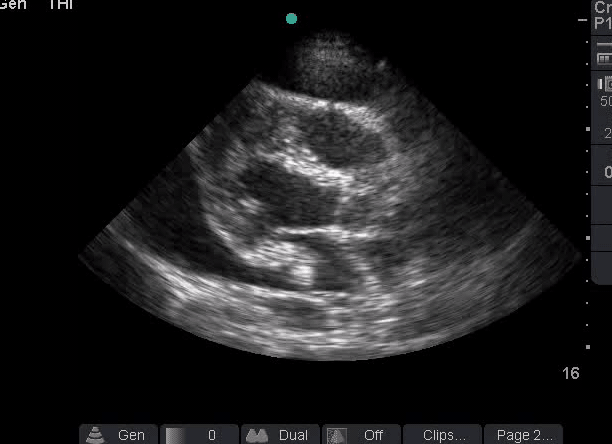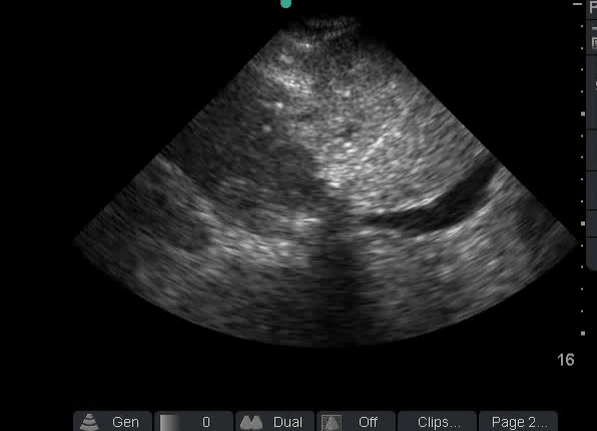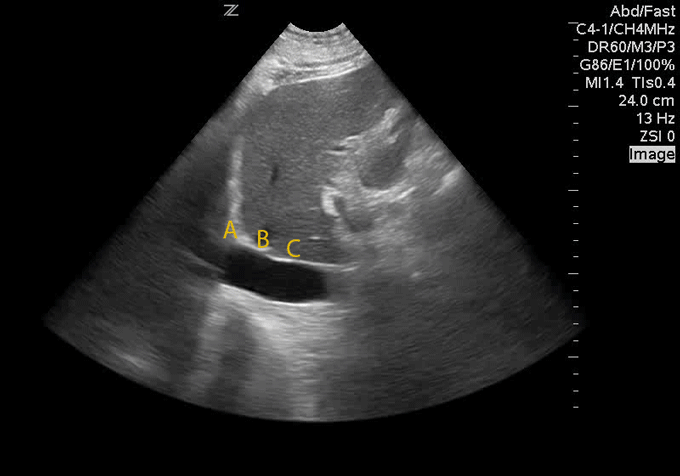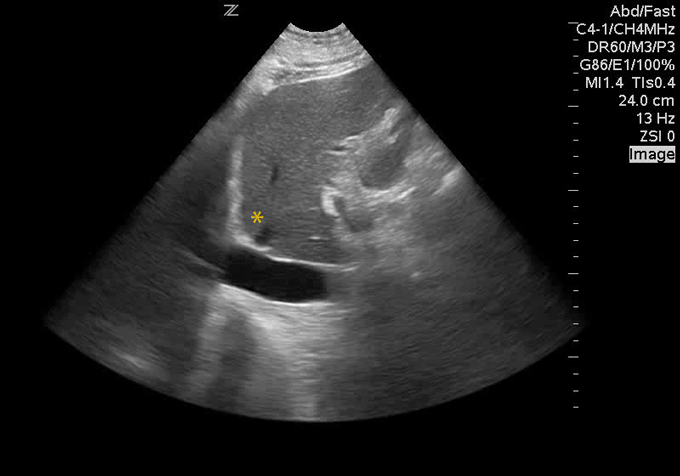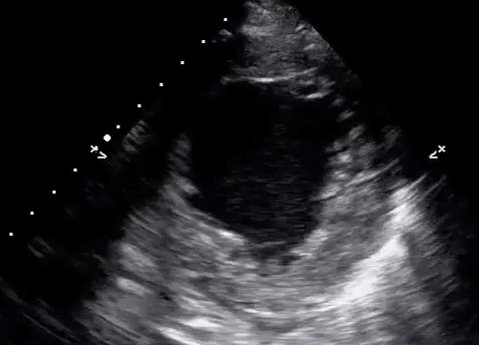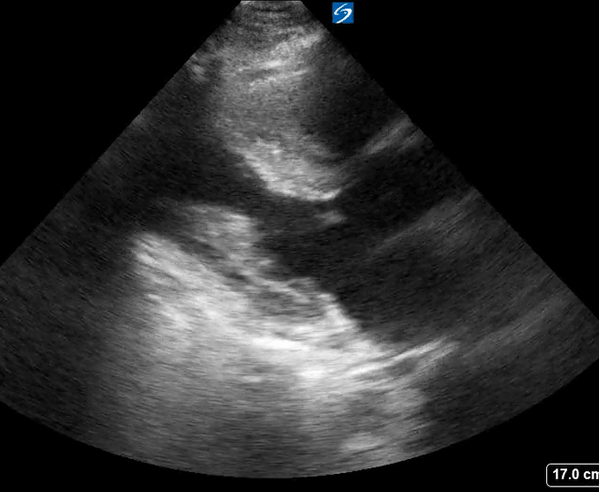Question Bank – Cardiac (Basic)
The highlighted dark area on this parasternal long axis view of the heart is:
Question Bank – Cardiac (Basic)
Quiz Summary
0 of 69 Questions completed
Questions:
Information
You have already completed the quiz before. Hence you can not start it again.
Quiz is loading…
You must sign in or sign up to start the quiz.
You must first complete the following:
Results
Results
0 of 69 Questions answered correctly
Your time:
Time has elapsed
You have reached 0 of 0 point(s), (0)
Earned Point(s): 0 of 0, (0)
0 Essay(s) Pending (Possible Point(s): 0)
Categories
- Not categorized 0%
- Cardiac 0%
- 1
- 2
- 3
- 4
- 5
- 6
- 7
- 8
- 9
- 10
- 11
- 12
- 13
- 14
- 15
- 16
- 17
- 18
- 19
- 20
- 21
- 22
- 23
- 24
- 25
- 26
- 27
- 28
- 29
- 30
- 31
- 32
- 33
- 34
- 35
- 36
- 37
- 38
- 39
- 40
- 41
- 42
- 43
- 44
- 45
- 46
- 47
- 48
- 49
- 50
- 51
- 52
- 53
- 54
- 55
- 56
- 57
- 58
- 59
- 60
- 61
- 62
- 63
- 64
- 65
- 66
- 67
- 68
- 69
- Current
- Review
- Answered
- Correct
- Incorrect
-
Question 1 of 69
1. Question
CorrectIncorrect -
Question 2 of 69
2. Question
CorrectIncorrect -
Question 3 of 69
3. Question
CorrectIncorrect -
Question 4 of 69
4. Question
CorrectIncorrect -
Question 5 of 69
5. Question
CorrectIncorrect -
Question 6 of 69
6. Question
This apical four chamber view on a patient with fever and a history of IV drug use demonstrates a vegetation on the
CorrectIncorrect -
Question 7 of 69
7. Question
This parasternal long axis view of the heart shows a global left ventricular systolic function that is
CorrectIncorrect -
Question 8 of 69
8. Question
This parasternal long axis view of the heart is a good example of the use of the descending aorta as a landmark to help show this patient has a
CorrectIncorrect -
Question 9 of 69
9. Question
The right ventricle in this parasternal short axis view taken at the level of the mitral valve and papillary muscles is
CorrectIncorrect -
Question 10 of 69
10. Question
CorrectIncorrect -
Question 11 of 69
11. Question
CorrectIncorrect -
Question 12 of 69
12. Question
CorrectIncorrect -
Question 13 of 69
13. Question
CorrectIncorrect -
Question 14 of 69
14. Question
A crash femoral line is placed during a cardiac arrest situation. Some agitated saline is injected intravenously and this subxyphoid view is obtained during a pulse check. What interpretation can you make about the location of the femoral line and cardiac activity?
CorrectIncorrect -
Question 15 of 69
15. Question
A patient presents in sepsis due to urinary tract infection with hypotension. A parasternal long axis view demonstrates
CorrectIncorrect -
Question 16 of 69
16. Question
A 45 year old female with a long standing history of hypertension and methamphetamine use presents to clinic for follow up after recent hospitalization for congestive heart failure. Her shortness of breath has improved. Considering the focused cardiac questions, what pathological findings are present in the image below?
CorrectIncorrect -
Question 17 of 69
17. Question
In the consensus statement published by the American Society of Echocardiography, the goals of the focused cardiac ultrasound in the symptomatic emergency department patient are which of the following: (mark all that apply)
CorrectIncorrect -
Question 18 of 69
18. Question
In the paper Bedside Echocardiography by Emergency Physicians published in 2001, Mandavia et al. determined that the non cardiologist diagnosed pericardial effusion at a sensitivity of ____ and specificity of ____?
CorrectIncorrect -
Question 19 of 69
19. Question
In the paper published in 2015 titled Diagnostic Accuracy of Right Ventricular Dysfunction Markers in Normotensive Emergency Department Patients with Acute Pulmonary Embolism, Weekes, et al. drew what conclusions regarding the sensitivity and specificity of non radiologists to diagnose RV dysfunction?
CorrectIncorrect -
Question 20 of 69
20. Question
The A4C view featured below rules out the presence of acute pulmonary embolism.
True or False?
CorrectIncorrect -
Question 21 of 69
21. Question
A 55 year old female presents to the emergency department complaining of chest pain and shortness of breath. She is diaphoretic with a blood pressure of 80/50, HR of 120, and O2 sat of 85% requiring 4L of oxygen. Her EKG is in sinus rhythm and shows no acute ischemic changes.
Based on the findings above, what is the next step in management?
CorrectIncorrect -
Question 22 of 69
22. Question
The Cardiopulmonary Limited Ultrasound Examination (CLUE) exam is a rapid evaluation of the heart and lungs and seeks to answers all of the following except?
CorrectIncorrect -
Question 23 of 69
23. Question
A 65 year old female with a history hypertension and diabetes presents with shortness of breath, orthopnea, weight gain, and bilateral leg swelling. Her bedside cardiac echo in the parasternal short view showed the following.
Based on your most likely diagnosis, what sonographic finding would you expect to see on her pulmonary ultrasound?
CorrectIncorrect -
Question 24 of 69
24. Question
A 35 year old male with a history methamphetamine use presents with shortness of breath, orthopnea and LE swelling. His bedside ultrasound shows the following finding:
What is the most likely diagnosis based on the findings above?
CorrectIncorrect -
Question 25 of 69
25. Question
A 50 year old female presents with shortness of breath and chest pain. She if found to have a moderately sized pericardial effusion on her bedside echo. Her IVC has the following appearance.
This finding rules out cardiac tamponade with a ________ sensitivity.
CorrectIncorrect -
Question 26 of 69
26. Question
Which of the following findings is NOT suggestive of cardiac tamponade?
CorrectIncorrect -
Question 27 of 69
27. Question
A 42 year male presents to the emergency department with chest pain and shortness of breath. He is found to have a unilateral swollen leg.
A focused cardiac echo is performed and reveals which distinctive finding for acute pulmonary embolism?
CorrectIncorrect -
Question 28 of 69
28. Question
A 53 year old female with a history of breast cancer undergoing chemotherapy presents with acute onset of shortness of breath and chest pain. Her bedside echo shows the following finding:
Based on the ultrasound above, what is your most likely diagnosis?
CorrectIncorrect -
Question 29 of 69
29. Question
A 60 year old female with a history of hypertension presents with shortness of breath, orthopnea, bilateral lower extremity edema. She is diagnosed with congestive heart failure. A bedside cardiac echo is performed and shows the following:
You estimate her ejection fraction to be __________.
CorrectIncorrect -
Question 30 of 69
30. Question
CorrectIncorrect -
Question 31 of 69
31. Question
What sonographic finding is present?
CorrectIncorrect -
Question 32 of 69
32. Question
A 45 year old male with a history of shortness of breath and chest pain is found to have a pericardial effusion. His blood pressure is 90/50 and his heart rate is 120. A bedside ultrasound shows the presence of a pericardial effusion. What ultrasound findings are concerning for Pericardial Tamponade?
CorrectIncorrect -
Question 33 of 69
33. Question
The absence of right ventricular diastolic collapse and right atrial systolic collapse has a ______ negative predictive value for pericardial tamponade.
CorrectIncorrect -
Question 34 of 69
34. Question
What pathological finding is depicted below?
CorrectIncorrect -
Question 35 of 69
35. Question
A 63 year old female with a long standing history of hypertension, diabetes, coronary artery disease presents to clinic for follow up after recent hospitalization for congestive heart failure. Her shortness of breath has improved. Considering the focused cardiac questions, what pathological findings are present in the image below?
CorrectIncorrect -
Question 36 of 69
36. Question
A 65 year old male with a history of congestive heart failure, COPD, hypertension, and diabetes presents to the clinic with shortness of breath. His vital signs are within normal limits. He reports he gets more short of breath with minimal exertion. He has no chest pain.
His bedside cardiac and lung ultrasound shows the following findings:
Right Thorax:
Left Thorax:
What is your most likely diagnosis for this patient’s acute dyspnea?
CorrectIncorrect -
Question 37 of 69
37. Question
A 63 year old female with a history of COPD, hypertension, and diabetes presents to the clinic with cough, subjective fever, and shortness of breath. Her CXR shows a right lower lobe pneumonia.
Her cardiac echo shows what finding?
CorrectIncorrect -
Question 38 of 69
38. Question
CorrectIncorrect -
Question 39 of 69
39. Question
CorrectIncorrect -
Question 40 of 69
40. Question
Dilation of the indicated structure is consistent with what diagnosis?
 CorrectIncorrect
CorrectIncorrect -
Question 41 of 69
41. Question
The highlighted structure on this parasternal long axis view of the heart is a cross section of the?
 CorrectIncorrect
CorrectIncorrect -
Question 42 of 69
42. Question
A patient with searing chest pain and hypertension presents to an urgent care setting where a parasternal long axis view happens to show an intimal flap in the highlighted structure. What other changes would reasonably be expected to see in this view?
 CorrectIncorrect
CorrectIncorrect -
Question 43 of 69
43. Question
The probe is in the 2nd or 3rd intercostal space at the left parasternal border with the probe marker pointed toward the patient’s right shoulder. What exam type/mode is the machine likely in?
 CorrectIncorrect
CorrectIncorrect -
Question 44 of 69
44. Question
After central line placement, agitated saline is injected which quickly fills the highlighted cavity and not the cavity above it. You determine the following:
 CorrectIncorrect
CorrectIncorrect -
Question 45 of 69
45. Question
Increased thickness of the highlighted structure may be seen in which of the following conditions?
 CorrectIncorrect
CorrectIncorrect -
Question 46 of 69
46. Question
E-point septal separation demonstrates the distance between the tip of the anterior leaflet of the mitral valve and which highlighted structure at end diastole.
 CorrectIncorrect
CorrectIncorrect -
Question 47 of 69
47. Question
The highlighted structure on this parasternal long axis view of the heart is:
 CorrectIncorrect
CorrectIncorrect -
Question 48 of 69
48. Question
The highlighted pathology in this parasternal long axis view of the heart is likely:
 CorrectIncorrect
CorrectIncorrect -
Question 49 of 69
49. Question
The patient with the highlighted pathology on this parasternal long axis view is most likely to have what kind of murmur?
 CorrectIncorrect
CorrectIncorrect -
Question 50 of 69
50. Question
The highlighted dark area on this parasternal long axis view of the heart is:
 CorrectIncorrect
CorrectIncorrect -
Question 51 of 69
51. Question
A young female patient with a history of rheumatoid arthritis presents with chest pain. EKG shows diffuse ST segment elevations and bedside echocardiography shows the following highlighted finding. What stands out on the differential?
 CorrectIncorrect
CorrectIncorrect -
Question 52 of 69
52. Question
The highlighted dark area on this parasternal long axis view of the heart is:
 CorrectIncorrect
CorrectIncorrect -
Question 53 of 69
53. Question
Characteristics of this chamber of the heart helpful in confirming correct orientation of the apical four chamber view include which of the following?
 CorrectIncorrect
CorrectIncorrect -
Question 54 of 69
54. Question
The valve leading into this chamber can be distinguished from the valve on the opposite ventricle by which characteristic?
 CorrectIncorrect
CorrectIncorrect -
Question 55 of 69
55. Question
The highlighted dark area on this parasternal long axis view of the heart is:
 CorrectIncorrect
CorrectIncorrect -
Question 56 of 69
56. Question
You obtain the following inferior vena cava view on a known 65 year old female in your office practice with a known history of heart failure with reduced ejection fraction and ongoing shortness of breath. It suggests:
 CorrectIncorrect
CorrectIncorrect -
Question 57 of 69
57. Question
With information provided on this ultrasound image, it can be determined that the probe marker in a sagittal/longitudinal orientation is pointed toward the patient’s:
 CorrectIncorrect
CorrectIncorrect -
Question 58 of 69
58. Question
Which of the following sources of hypotension would not be suggested by the inferior vena cava finding on this clip?
 CorrectIncorrect
CorrectIncorrect -
Question 59 of 69
59. Question
An 86 year old male presents to the ER with blood pressure of 80/40, pulse rate of 105, febrile to 100.8 degrees F. The following IVC view suggests which of the following, clinically? (Check all that apply)
 CorrectIncorrect
CorrectIncorrect -
Question 60 of 69
60. Question
The IVC will typically appear closer to the patient’s _____ side in comparison to the aorta in a sagittal view.
 CorrectIncorrect
CorrectIncorrect -
Question 61 of 69
61. Question
The clip demonstrates the preferred means of measuring the IVC in expiration and inspiration. (True or False)
 CorrectIncorrect
CorrectIncorrect -
Question 62 of 69
62. Question
The patient with this parasternal long axis has mild hypotension and electrical alternans on an EKG. A view of the IVC shows that it is normal in caliber and collapses more than 50 percent with inspiration. What can be concluded?
 CorrectIncorrect
CorrectIncorrect -
Question 63 of 69
63. Question
A 54 year old male with heart failure with preserved ejection fraction and COPD presents to the office with increased shortness of breath and an oxygen saturation of 90 percent. The following IVC view suggests:
 CorrectIncorrect
CorrectIncorrect -
Question 64 of 69
64. Question
The most appropriate point to measure the IVC in this image would correspond to:
 CorrectIncorrect
CorrectIncorrect -
Question 65 of 69
65. Question
The marked vessel structure on this image is:
 CorrectIncorrect
CorrectIncorrect -
Question 66 of 69
66. Question
In addition to a poor ejection fraction, what other concern would be raised by the findings on this parasternal short axis view of the heart?
 CorrectIncorrect
CorrectIncorrect -
Question 67 of 69
67. Question
The ejection fraction in this parasternal long axis view is:
 CorrectIncorrect
CorrectIncorrect -
Question 68 of 69
68. Question
A 78 year old female with past medical history of heart failure (remote), COPD presents with fever, shortness of breath, and tachycardia. Chest xray shows interstitial infiltrates “infectious vs. pulmonary edema.” A bedside echocardiogram shows the following. The IVC is small and collapsing. What is an appropriate first step?
 CorrectIncorrect
CorrectIncorrect -
Question 69 of 69
69. Question
The presence of which of these conditions would invalidate the use of this technique to estimate ejection fraction? (Check all that apply)
 CorrectIncorrect
CorrectIncorrect
Contact form website
Contact form website
"*" indicates required fields
CONTACT US
Get in touch with our team to know more about GUSI.
PRE-REGISTRATION | POCUS FOR PRIMARY CARE IN PERSON COURSE OCT. 2025
Tentative Dates: October 17-18, 2025 | San Francisco, CA
PRE-REGISTRATION | POCUS FOR PRIMARY CARE IN PERSON COURSE APRIL 2025
Tentative Dates: April 2025 | San Francisco, CA
PRE-REGISTRATION | GUSI-OHSU Musculoskeletal Ultrasound for Primary Care & Joint Injection Cadaver Course
Tentative Dates: June 7-8, 2025, Portland, OR
PRE-REGISTRATION | OB POCUS ESSENTIALS COURSE JAN 30 - FEB 2
Jan 30th to Feb 2nd 2025
[elementor-template id=”3620″]


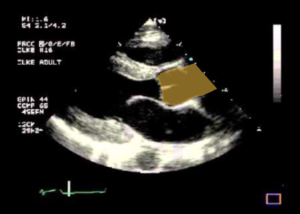 The highlighted structure on this parasternal long axis view of the heart is the: ________
The highlighted structure on this parasternal long axis view of the heart is the: ________